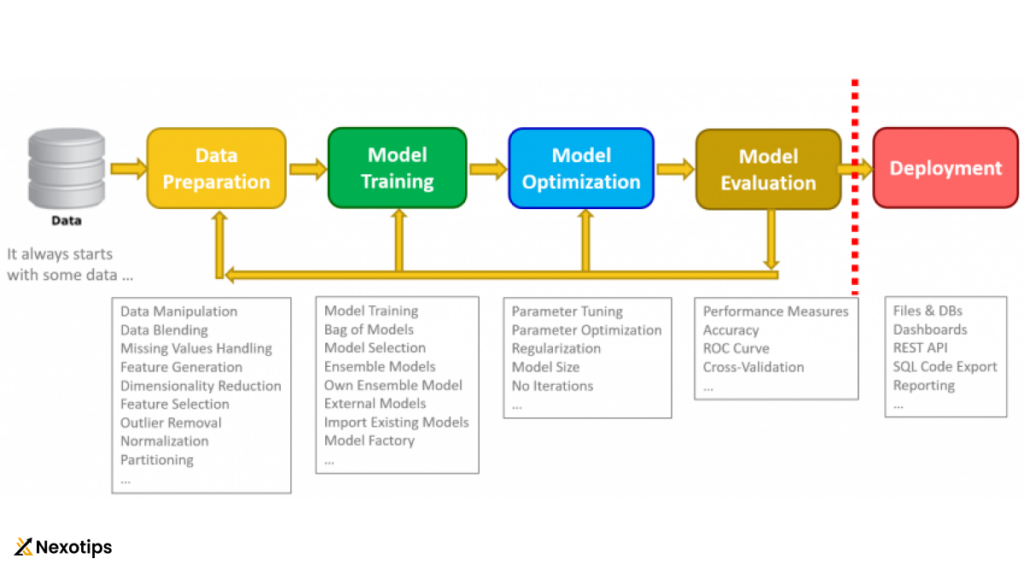
Mastering Python Programming Language for Data Science Applications in 2024 : A Comprehensive Guide
Python has become the de facto language for data science due to its simplicity, versatility, and powerful libraries. Aspiring data scientists and seasoned professionals alike can benefit immensely from mastering Python for data science applications. In this comprehensive guide, we’ll delve into the intricacies of Python programming specifically tailored for data science tasks. From basic concepts to advanced techniques, this guide aims to equip you with the knowledge and skills necessary to excel in leveraging Python for your data projects.
Python has evolved from a general-purpose programming language to a powerhouse in the realm of data science. Its simplicity, readability, and extensive libraries have made it the go-to choice for data professionals worldwide. In this blog, we’ll explore the myriad ways it can be harnessed for data science applications, from data manipulation and visualization to machine learning and beyond.
Contents :
Understanding Python Basics for Data Science:
- Variables, Data Types, and Data Structures: it offers a rich set of data types such as integers, floats, strings, lists, tuples, dictionaries, and sets. Understanding these fundamental building blocks is crucial for effective data manipulation and analysis.
- Control Flow and Loops: Control flow statements like if, else, and loops such as for and while are essential for implementing logical operations and iterating over data structures.
- Functions and Modules: it’s support for functions and modules facilitates modular programming, code reuse, and better code organization, which are indispensable for managing complex data science projects.
Data Handling and Manipulation with Python:
- Introduction to NumPy: NumPy is the cornerstone of numerical computing in Python. It provides powerful array manipulation capabilities along with mathematical functions and linear algebra operations, making it indispensable for data manipulation tasks.
- Working with Pandas: Pandas is a versatile library for data manipulation and analysis. It introduces the DataFrame data structure, which is akin to a spreadsheet, allowing for efficient handling of structured data.
- Handling Missing Data: Real-world datasets often contain missing or incomplete data. it provides tools within libraries like NumPy and Pandas to handle missing data through techniques such as imputation or deletion.

Data Visualization:
- Matplotlib Essentials: Matplotlib is a comprehensive plotting library in Python that enables the creation of a wide range of static, interactive, and publication-quality visualizations. Understanding its intricacies is crucial for effectively communicating insights derived from data.
- Seaborn for Statistical Visualization: Seaborn builds on top of Matplotlib and provides a high-level interface for creating aesthetically pleasing statistical graphics. It simplifies the process of visualizing complex relationships within data.
- Interactive Visualizations with Plotly: Plotly is a powerful library for creating interactive visualizations suitable for web-based data science applications. Its versatility and ease of use make it an invaluable tool for exploring and presenting data interactively.
Introduction to Machine Learning with Python:
- Scikit-learn: Scikit-learn is a versatile library that provides a wide array of machine learning algorithms and tools for data preprocessing, model selection, and evaluation. Mastering Scikit-learn is essential for building predictive models and conducting machine learning experiments.
- Introduction to TensorFlow and Keras: TensorFlow and Keras are popular frameworks for deep learning in it. They provide high-level abstractions for building and training neural networks, making complex deep learning tasks accessible to data scientists.

Advanced Topics in Python for Data Science:
- Handling Big Data with PySpark: PySpark offers a Python API for Apache Spark, a powerful distributed computing framework. It enables scalable data processing and analysis on large datasets distributed across a cluster of machines.
- Web Scraping with BeautifulSoup: BeautifulSoup is a Python library for parsing HTML and XML documents, making it ideal for web scraping tasks. It allows data scientists to extract structured data from websites for further analysis.
- Natural Language Processing (NLP) with NLTK and spaCy: NLTK and spaCy are popular libraries for natural language processing in Python. They provide tools and algorithms for text processing, tokenization, part-of-speech tagging, named entity recognition, and more, making them indispensable for analyzing textual data.
Best Practices and Tips for Python Data Science Projects:
- Code Optimization and Efficiency: Optimizing it’s code for performance is crucial, especially when dealing with large datasets or computationally intensive tasks. Techniques such as vectorization, parallelization, and memory management can significantly improve code efficiency.
- Version Control with Git: Version control is essential for tracking changes, collaborating with team members, and ensuring reproducibility in data science projects. Git, along with platforms like GitHub, provides powerful version control capabilities tailored for data science workflows.
- Documentation and Reproducibility: Documenting code, methodologies, and results is essential for ensuring transparency, reproducibility, and knowledge transfer in data science projects. Tools like Jupyter Notebooks and Markdown facilitate the creation of comprehensive documentation alongside code.

Conclusion:
Mastering Python for data science opens up a world of opportunities for extracting insights from data, building predictive models, and solving real-world problems across various domains. By mastering fundamentals, data manipulation techniques, visualization tools, machine learning algorithms, and advanced topics, you’ll be well-equipped to tackle complex data challenges and drive innovation in the field of data science. Remember to keep learning, experimenting, and applying it’s power to unlock the full potential of data for impactful decision-making and problem-solving.

One thought on “Mastering Python Programming Language for Data Science Applications in 2024 : A Comprehensive Guide”